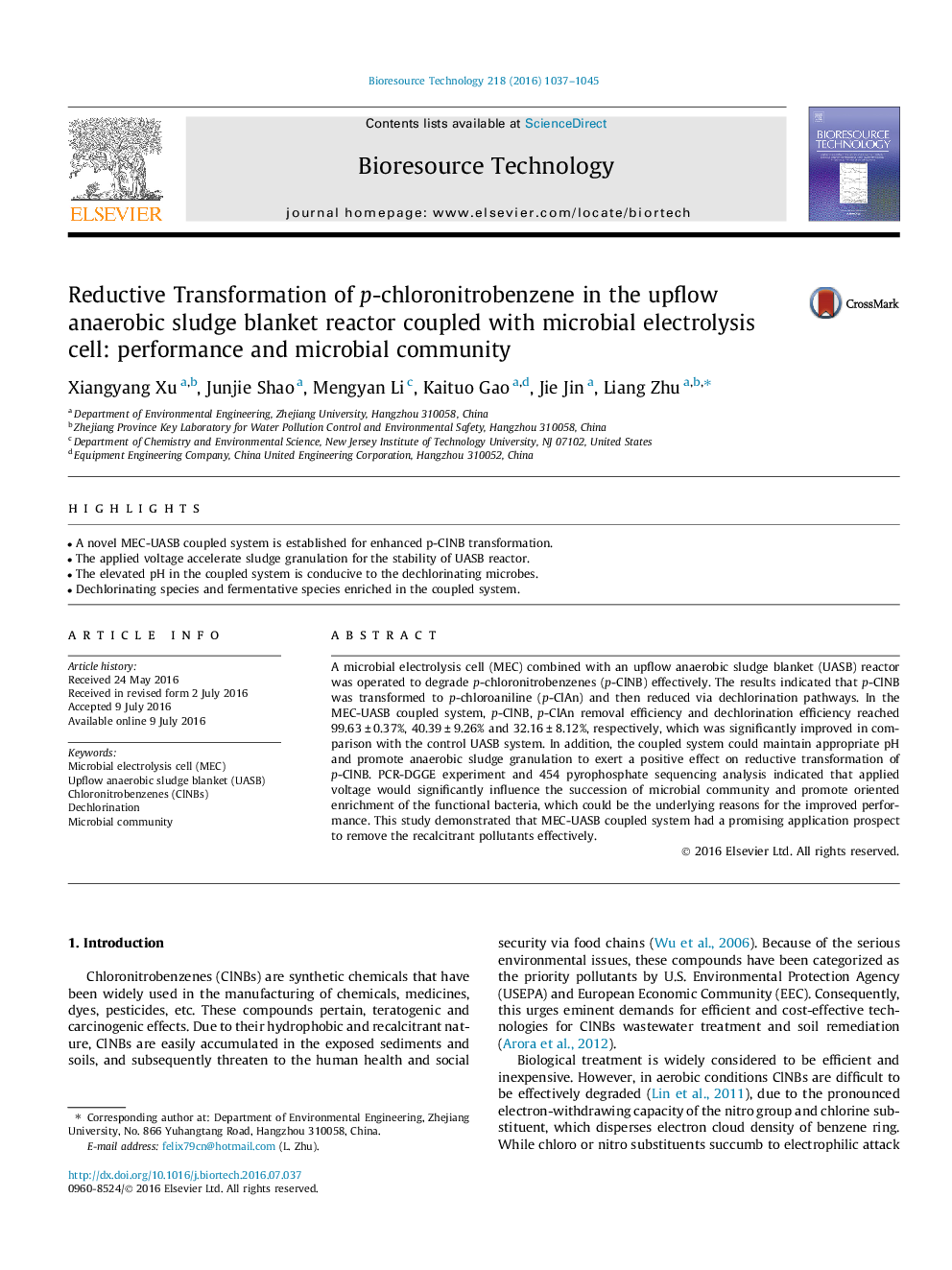| Article ID | Journal | Published Year | Pages | File Type |
|---|---|---|---|---|
| 7070388 | Bioresource Technology | 2016 | 9 Pages |
Abstract
A microbial electrolysis cell (MEC) combined with an upflow anaerobic sludge blanket (UASB) reactor was operated to degrade p-chloronitrobenzenes (p-ClNB) effectively. The results indicated that p-ClNB was transformed to p-chloroaniline (p-ClAn) and then reduced via dechlorination pathways. In the MEC-UASB coupled system, p-ClNB, p-ClAn removal efficiency and dechlorination efficiency reached 99.63 ± 0.37%, 40.39 ± 9.26% and 32.16 ± 8.12%, respectively, which was significantly improved in comparison with the control UASB system. In addition, the coupled system could maintain appropriate pH and promote anaerobic sludge granulation to exert a positive effect on reductive transformation of p-ClNB. PCR-DGGE experiment and 454 pyrophosphate sequencing analysis indicated that applied voltage would significantly influence the succession of microbial community and promote oriented enrichment of the functional bacteria, which could be the underlying reasons for the improved performance. This study demonstrated that MEC-UASB coupled system had a promising application prospect to remove the recalcitrant pollutants effectively.
Keywords
Related Topics
Physical Sciences and Engineering
Chemical Engineering
Process Chemistry and Technology
Authors
Xiangyang Xu, Junjie Shao, Mengyan Li, Kaituo Gao, Jie Jin, Liang Zhu,
